Artist and sculptor, Avard Fairbanks, served as the first Dean of the College of Fine Arts, Photo: “Avard Fairbanks” Repository: University of Utah, Utah State Historical Society Classified Photo Collection, Photo number 12233, Used by permission, Utah Historical Society
WRITTEN BY SYDNEY CHEEK-O'DONNEL
AND MARINA GOMBERG

As philosopher and writer George Santayana said, “To know your future, you must know your past.” And what a joy it is to look back.
There were but 18 faculty members on staff in 1892, when the University of Deseret became the University of Utah. Despite its meager size, the university’s commitment to the arts was already well established by the time of its renaming. In addition to courses in music, the institution already had a budding Art Department, offering a four-year program focused on drawing and painting.
In fact, the first textbook produced by a U faculty member was about music. Written by Evan Stephens and published in 1883, “A Primer and First Reader of Vocal Music” remains of great relevance. Google Books notes that it is identified by scholars as “culturally important, and is part of the knowledge base of civilization as we know it.”
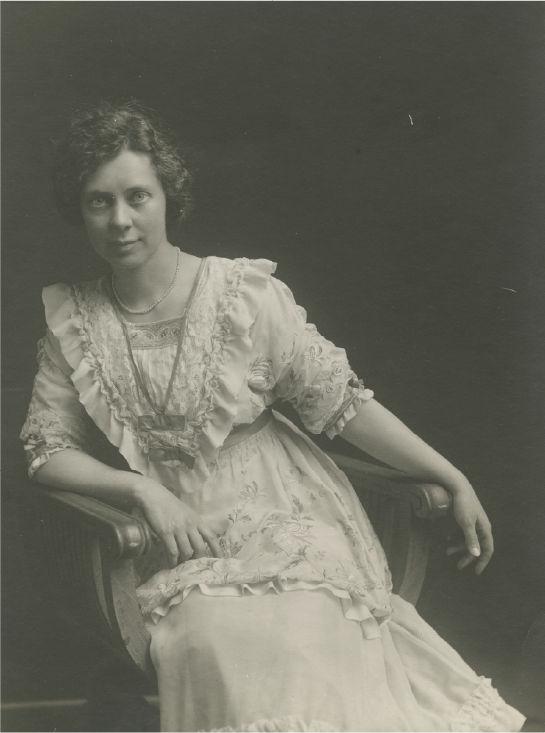
“First Lady of Utah Theatre,” Maud May Babcock, was the University of Utah’s first female faculty member; she is credited for starting dance and theatre education at the U (Photo: “Maud May Babcock, undated” Repository: University of Utah, P0337 Lila Eccles Brimhall Photograph Collection, 1893-1962, Photo number: P0337n1_05_032 (Altered))
The early inclusion of the arts in the university’s curriculum reflects the values and activities of the pioneers who migrated to the Salt Lake area in the nineteenth century. Theatres and music halls were among the first structures they built, along with homes and businesses.
Of course, the arts were practiced in this area long before the arrival of white settlers, as evidenced by the many pictographs and petroglyphs that adorn the rocks of our state. The Shoshone, Paiute, Goshute, and Ute tribes, on whose land the U stands, have vibrant artistic traditions as well, including beadwork, leatherwork, weaving, sculpture, storytelling, ceremonial music, hand-game songs, and social dance music.
The reverberations of that passion can be felt today and traced back through the history of the arts at the U. And it’s an exciting path.
It was also in 1892 that the first female faculty member, Maud May Babcock, was hired. A trained actress from New York, Babcock taught “elocution” and “physical culture,” which include theatrical performance and dance.
Under her guidance, theatre in its first iteration at the U, was born. Lovingly known as the “First Lady of Utah Theatre,” Babcock’s early legacy was so instrumental that our students still perform in a theatre bearing her name, on the lower level of the Pioneer Memorial Theatre Building.
It was during Babcock’s time that Kingsbury Hall, the iconic center for performing arts on Presidents Circle, was built. Completed in 1930, it not only provided a grant stage for the productions she produced with students, it also provided a place for nationally renowned professional artist to perform on campus, a tradition begun by Babcock that continues today.
In 1940, Elizabeth R. Hayes was appointed Director of Modern Dance, and soon after established the university’s first dance major. Hayes, an indefatigable advocate for dance and the arts, was a founding member of the national organization Council of Dance Administrators and was one of three representatives from across the nation who travelled to Washington, D.C., to argue for dance as a federally recognized academic discipline.
She was instrumental in the development of the National Association of Schools of Dance, the discipline’s accrediting body. Much of how dance exists in higher education in our country today can be attributed to Hayes’ pioneering spirit and ideas about how dance could exist as a distinct academic discipline.

During that decade, another incredible influence arrived. In 1947, famed portrait artist Alvin Gittins joined the faculty. He was an advocate of academic realism who practiced a rigorous technical approach to teaching and who served as the department’s chair for six years.
As the U’s artist-in-residence, he painted 89 portraits of individuals connected to the university, including presidents, researchers, scientists, physicians, and other artists.
His influence would live on through the many people he taught and through the gallery named in his honor, first located in the Art Building and re-opened in the Film & Media Arts Building this past spring, 2023.
And with music, studio art, dance, and theatre, the College of Fine Arts (CFA) was officially established in 1948, with sculptor Avard Fairbanks serving as its first dean.
Baccalaureate degrees in the CFA were considered professional in nature, meaning they were training students to work in the profession and/or teach. The college also offered the Master of Fine Arts, Master of Music, and PhD degrees.
That same year, the Music Department welcomed LeRoy Robertson, who was at that time the most famous composer in Utah, as its chair. Thus began Music’s “modern era,” which was followed in short order by accreditation from the National Association of Schools of Music in 1952.
It was around that same time that ballet took center stage when the Department of Speech (which offered theatre courses) established University Ballet Theatre. Just a year later, noted dancer, teacher, choreographer, and founder of the San Francisco Ballet, Willam F. Christensen, came back to his home state and began a ballet training center at the U, while also founding what would later become Ballet West.
The Ballet program shared space in the former student union building — now David Gardner Hall. And in 1955, the Department of Music would move in with them. The energy of many artists in one space fostered creative community.
Across campus, a future pioneer of U Theatre had arrived as a sophomore transfer student in 1954. Though there was not yet a Department of Theatre, Anne Cullimore Decker took speech and public speaking courses — including one from Royal Garff, who had written the textbook they studied (and that she would later use as a high school theatre teacher at East High).
Ballet and Theatre separated from the Department of Speech in 1962 to become the Department of Theatre & Ballet, and then in 1966, the Department of Ballet and Modern Dance was established, creating one of the first (perhaps the first) ballet programs in higher education in the nation.
Things were percolating in a new area of the arts in the early 1970s, when English Professor Tom Sobchack taught the U’s first film course and dreamt of what would eventually become a department enrolling more students than any other academic unit in the CFA.
Specialization and individuation were happening in other disciplines around that time as well. In 1978, Ballet and Modern Dance became two distinct departments. And in the early 1980s, under the leadership of Bill Siska, the Film Studies Program was formed, a combined effort of the Art, Theatre, and English Departments.
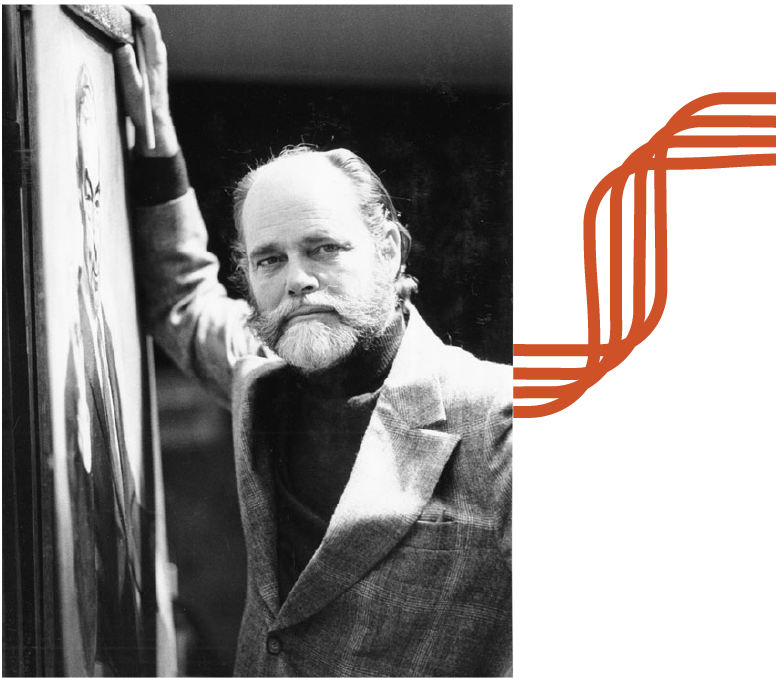
Famed portrait artist and professor Alvin Gittins works can be seen all across campus and the state (Photo: “Alvin Gittins” Repository: University of Utah, Utah State Historical Society Classified Photo Collection, Photo number 12359, Used by permission, Utah Historical Society)
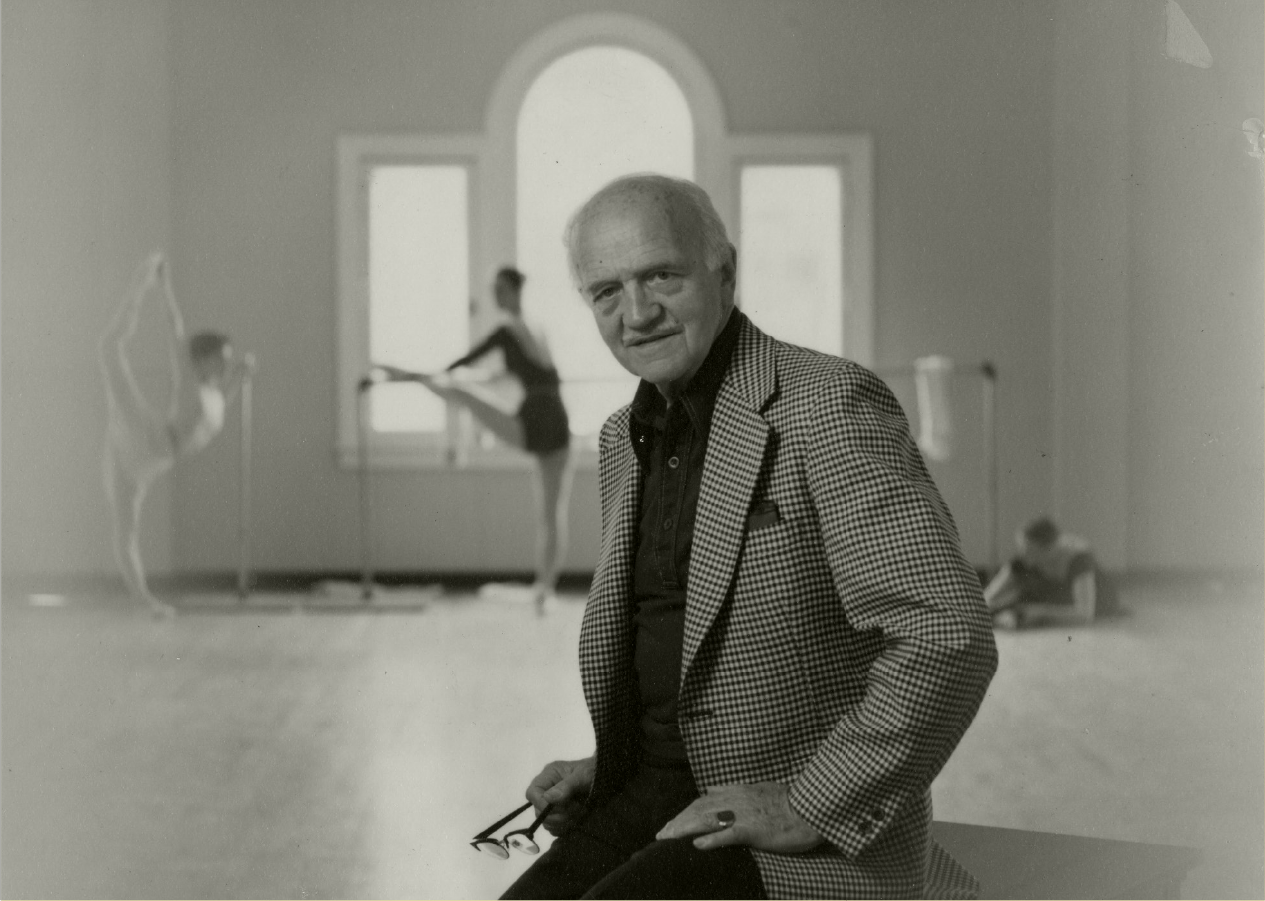
Faculty member, Willam F. Christensen, famous dancer, teacher, choreographer, and founder of the San Francisco Ballet and Ballet West (Photo: “Willam Christensen portrait” Repository: University of Utah, Barbara J. Hamblin Collection, Photo number: P0593n01_02_001 (Altered))
Anne Cullimore Decker returned to the U in 1980 to get her master’s degree, and eventually taught on the faculty in the Actor Training Program (ATP) in 1984, which had been recently established by beloved professor and mentor, Kenneth Washington.
Washington had come to the U as a grad student to study dance, and ended up gravitating toward theatre, where he ultimately began teaching in 1976. His legacy lives on today through his personal impact and the ATP’s continued national reputation for excellence.
"He imbued in me such a respect for the craft and such a multi-faceted way of looking at creating a character and entering truthfully into the world of the playwright,” said theatre alumnus, Christopher Borg. “I am still employing techniques, theory, and a point of view and entry into a character that I learned from Kenneth Washington 30 years ago."
At the end of that decade, the Alice Sheets Marriott Center for Dance was built and opened its doors in 1989. The contemporary space, made specifically for dance training and performance included a 333-seat theatre, six spacious dance studios, and ample dressing room space.
For both the modern dance and ballet programs, as faculty were developed and the curriculum grew, the excellence of these programs served as examples for other university dance programs.
It was also in 1996 when the Department of Art expanded to become the Department of Art & Art History.
Film studies was also on an upward trajectory. “Under Professor Siska’s direction, guidance, and administration, the Film Studies Program grew and flourished, and was soon graduating as many or more students than the other academic units,” said Professor Brian Patrick, who also served as the director from 1993-1998. “This is astonishing growth for a new program.”
And although all academic units have significantly grown since then, Film & Media Arts now leads the pack in number of annual graduates.
At the turn of the 21st century, the School of Music, which had moved out of David Gardner Hall during the building’s massive renovation and expansion, moved back into a stunning, modern state-of the-art space equipped with a new concert hall, rehearsal rooms, faculty offices, and practice rooms. In two short years, and because of its growth and advancement, what had once been the Department of Music became the School of Music. This name change reflected the comprehensive structure of graduate and undergraduate degree programs offering outstanding performance experiences balanced with rigorous professional and academic training.
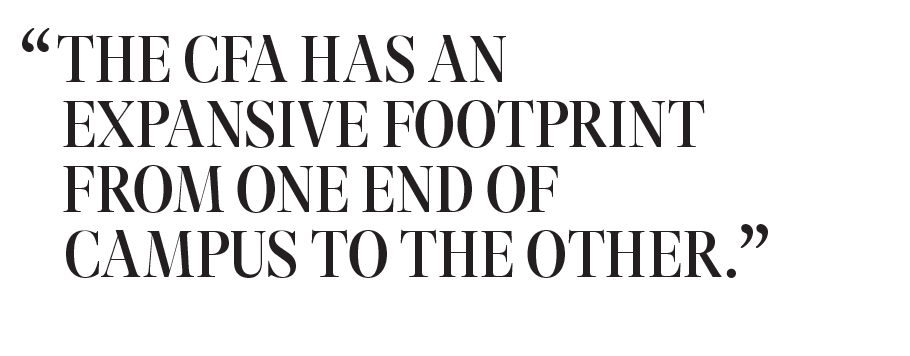
In 2002, the nation’s first ArtsBridge program was established at the U. ArtsBridge is an arts education outreach program that provides valuable experiences for university students to work with local K-12 students. Its work continues to this day, making it the longest running program of its kind in the nation.
This was a first of many foundational moments in what is now an award-winning Arts Education program. Three years after ArtsBridge started, the U became the first institution to receive a Beverley Taylor Sorenson Arts Education Endowment. This endowment is responsible for holding a pre-service Arts Integration Conference, ArtsLINK, that offers students instruction in arts integration, opportunities to engage in collaborative planning, and practice instructing K-6 students. And in 2007, the CFA established the role of Assistant Dean for Arts Education, reaffirming the importance of teaching the arts in addition to the value of making it.

Elizabeth R. Hayes established the university’s first dance major (Photo: Portrait of Elizabeth “Betty” Hayes, c1940s. University of Utah Libraries, Special Collections. P1534n09_02_018 (Altered))
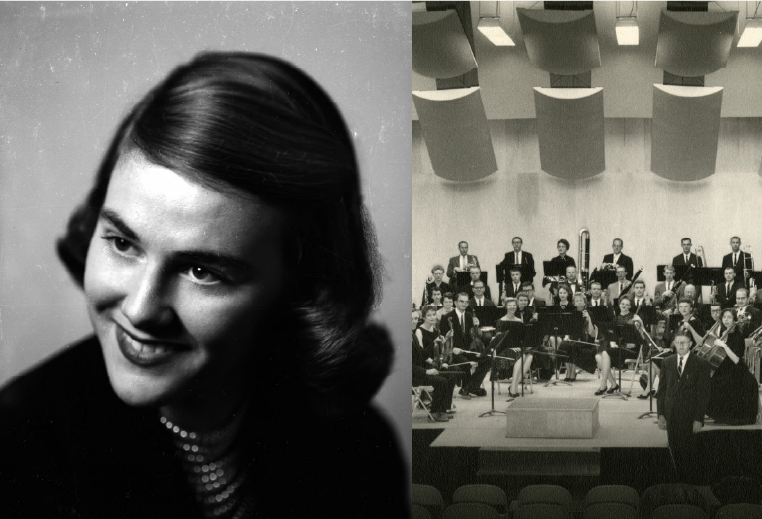
(Left) Alumna and Professor Emeritus, Anne Cullimore Decker (Photo: “Anne Cullimore” by Larson, O. Blaine, Repository: University of Utah, Batch 12, Box 43, Photo No. 19758, Used by permission, Utah Historical Society (Altered))
(Right) University of Utah Orchestra with LeRoy J. Robertson (Photo: “LeRoy J. Robertson with University Of Utah Orchestra [10]” Repository: University of Utah, P0038 LeRoy Robertson photograph collection, 1945-1960, Photo P0038n02_01_137 (Altered))
Toward the end of the first decade of the 21st century, and after thoughtful vision and stewardship, what was the Division of Film Studies became the Department of Film & Media Arts under the leadership of then Chair Kevin Hanson.
A few years later, in 2016, the departments of Modern Dance and Ballet, merged to become the School of Dance, a comprehensive unit offering professional undergraduate training and terminal graduate degrees for future academics.
With the sustained growth of the college, the faculty’s creative and scholarly research kept producing more demand for arts education programs and opportunities. In 2018, arts education faculty members came together to create and launch a new Master of Arts in Teaching – Fine Arts program (MAT-FA), which is now a nationally-ranked hybrid/online degree program designed to provide advanced training for professional arts educators working in schools, communities, and at arts organizations around the country.
The CFA also became the new home for the Utah Center for Vocology, which is an organization made up of active researchers, professors, clinicians, and graduate students in areas across campus, including the Department of Communication Sciences and Disorders, Department of Theatre, School of Music, and Voice Disorders Center.
Now, in 2023, the Film & Media Arts Building and the Price Theatre Arts Building have been renovated, we have the brand-new, state-of-the-art Alvin Gittins Gallery exhibition space, and we will soon open the doors of Meldrum Theatre in the renovated Einar Nielsen Fieldhouse. The CFA has an expansive footprint from one end of campus to the other. Similarly, we graduate roughly 400 students each spring, expanding the impact of the College on local, regional, national, and international arts scenes.
Through every step of the journey, we see common threads: persistence, grit, and creativity. The CFA is a product of the commitment of the people on whose shoulders we now stand. And their story reaches far beyond our campus. Not only have the U’s artists and arts scholars made significant impacts at the U, but they have also changed our entire state for the better.
In addition to the Utah Museum of Fine Arts, Pioneer Theatre Company, UtahPresents, and Tanner Dance, the four professional arts affiliate organizations on campus, we celebrate the CFA’s influence in the creation of Ballet West, Repertory Dance Theatre, Ririe-Woodbury Dance Company (all three of which started at the U), Utah Symphony, and other locally and nationally recognized arts organizations.
We are honored to be celebrating such a momentous anniversary this year, and while we don’t have nearly the space to acknowledge all the people and processes that got us here, those histories are alive and well in our classrooms, studios, theatres, and halls.
May our next 75 years be as inspired. ■



